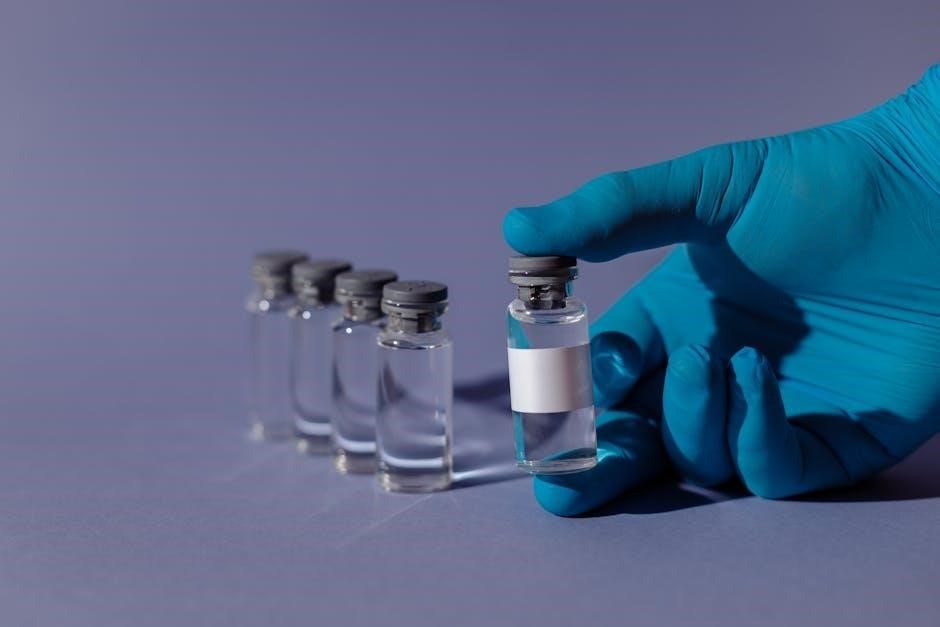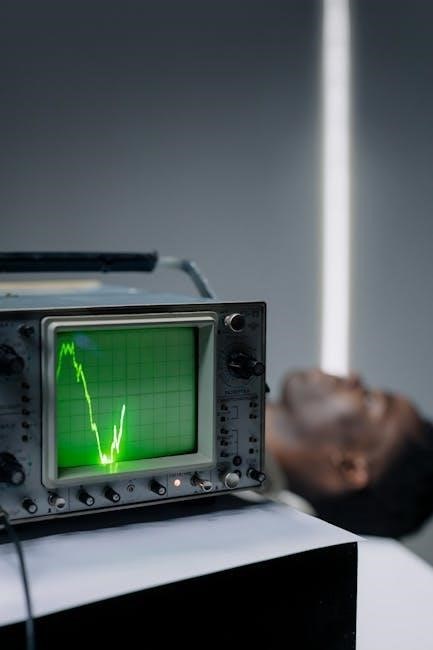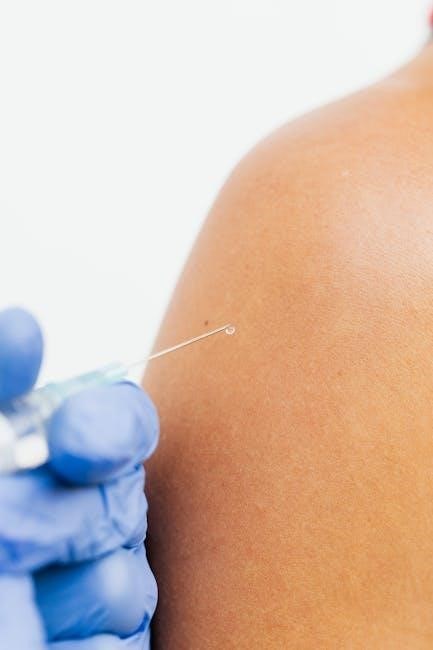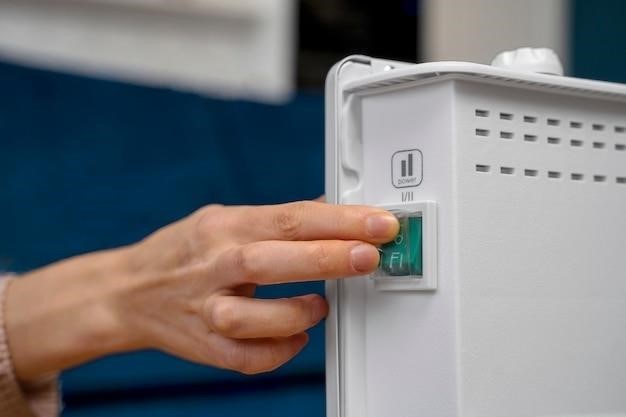The integumentary system, the body’s outer covering, includes skin, hair, nails, and glands, serving as a protective barrier and regulating body functions. Medical terminology for this system is essential in healthcare, focusing on its structures, functions, and related conditions.
1.1. Definition and Overview
The integumentary system is the body’s largest organ, comprising the skin, hair, nails, and associated glands. It acts as a protective barrier against external factors, such as pathogens and environmental stressors. The system also plays a crucial role in regulating body temperature, aiding in the production of vitamin D, and facilitating sensory perception. In medical terminology, understanding the integumentary system is vital for diagnosing and treating conditions like dermatitis, eczema, and melanoma. This system is fundamental to maintaining overall health and is often studied in depth in healthcare education and practice.
1.2. Importance of the Integumentary System in Medical Terminology
The integumentary system holds significant importance in medical terminology due to its vast array of structures and functions. It serves as a foundational area of study for healthcare professionals, particularly in dermatology. Understanding its terminology aids in diagnosing conditions like skin cancers, infections, and autoimmune diseases. Accurate use of terms related to the integumentary system ensures clear communication among healthcare providers, enhancing patient care and documentation. This knowledge is essential for building a robust vocabulary in medical practice and education, making it a cornerstone of healthcare training and application.

Anatomy of the Integumentary System
The integumentary system consists of the skin and its accessory structures, such as hair, nails, and glands. The skin is the body’s largest organ, composed of multiple layers.
2.1. Layers of the Skin
The skin consists of multiple layers, with the epidermis being the outermost, composed of stratified squamous epithelium. It is avascular, relying on diffusion for nourishment. Beneath lies the dermis, a thick layer of connective tissue containing blood vessels, nerve endings, hair follicles, and glands. The dermis provides structural support and sensation. The deepest layer is the subcutaneous tissue, attaching the skin to underlying structures and aiding in thermoregulation and shock absorption. These layers work together to protect and regulate the body, forming a complex protective barrier.
2.2. Epidermis and Dermis
The epidermis is the outermost skin layer, composed of keratinized stratified squamous epithelium. It is avascular, relying on diffusion for nourishment, and consists of five distinct strata in thick skin and four in thin skin. Beneath lies the dermis, a dense layer of connective tissue containing blood vessels, nerve endings, hair follicles, and glands. The dermis provides structural support, sensation, and regulates body temperature. Together, the epidermis and dermis form a protective barrier, essential for maintaining bodily functions and preventing external damage.
2.3. Subcutaneous Tissue
The subcutaneous tissue, also known as the hypodermis, lies beneath the dermis. It consists of loose connective tissue and adipose (fat) cells. This layer acts as insulation, reducing heat loss and cushioning the body from external impacts. It also stores energy in the form of fat and aids in shock absorption. The subcutaneous tissue connects the skin to underlying muscles and bones, providing mobility and support. Its composition varies with factors like body region, age, and overall health, playing a crucial role in maintaining the integrity of the integumentary system.

Physiology of the Integumentary System
The integumentary system regulates body temperature, protects against pathogens, and aids in sensation and vitamin D production. Its functions are vital for maintaining homeostasis and overall health.
3.1. Functions of the Skin
The skin serves as a protective barrier against external pathogens, regulates body temperature, and aids in sensation through nerve endings. It also synthesizes vitamin D and assists in excretion through sweating. Medical terminology often highlights these functions, emphasizing the skin’s role in maintaining homeostasis and overall health. Understanding its physiology is crucial for diagnosing conditions like burns, infections, and dermatological disorders, which are commonly studied in healthcare education.
3.2. Role of Accessory Structures (Hair, Nails, Glands)
Hair provides protection and aids in sensation, while nails safeguard the tips of fingers and toes. Glands, such as sebaceous and sweat glands, produce oils and regulate body temperature. Medical terminology often references these structures in diagnoses, like hyperhidrosis (excessive sweating) or onychomycosis (nail infections). Understanding their functions is vital for identifying conditions and treatments, making them a key focus in healthcare education and dermatological studies.

Medical Terminology Related to the Integumentary System
Understanding medical terminology for the integumentary system involves mastering root words, prefixes, and suffixes. Terms like “dermatology” (study of skin) and “hypodermic” (under the skin) are essential for accurate communication in healthcare settings.
4.1. Combining Forms, Prefixes, and Suffixes

The integumentary system’s medical terminology relies on combining forms, prefixes, and suffixes. For example, “dermat/o” refers to the skin, while “-itis” denotes inflammation, forming “dermatitis.” Prefixes like “hypo-” (under) and “epi-” (upon) modify terms, as in “hypodermic” (under the skin) and “epidermis” (outer skin layer). Suffixes such as “-algia” (pain) and “-ectomy” (removal) further specify conditions or procedures. Mastering these components is essential for constructing and understanding medical terms related to skin conditions, treatments, and anatomical structures.
4.2. Common Medical Terms and Their Pronunciations
Key terms in integumentary medical terminology include dermatitis (der-muh-TIE-tis), referring to skin inflammation, and epidermis (ep-ih-DER-mis), the skin’s outer layer. Melanoma (mel-uh-NO-muh) denotes a type of skin cancer, while subcutaneous (sub-kyoo-TAY-nee-us) describes tissue beneath the skin. Keratosis (ker-uh-TO-sis) involves abnormal skin growth, and sebaceous (seb-AY-shus) relates to oil-producing glands. Pronouncing these terms correctly is crucial for clear communication in healthcare.
4.3. Abbreviations Associated with the Integumentary System
Common abbreviations in integumentary medical terminology include SKIN (skin), SC (subcutaneous), and DERM (dermis). EPID stands for epidermis, while SB refers to sebaceous glands. HT denotes hair follicles, and NG is used for nails. These abbreviations are often found in medical charts and documentation, streamlining communication among healthcare professionals. Understanding them is essential for accurate record-keeping and effective patient care.

Accessory Structures of the Integumentary System
Accessory structures include hair, nails, and glands, which provide protective, sensory, and regulatory functions. They are vital for overall bodily protection and maintaining homeostasis.
5.1. Hair and Its Functions
Hair, a keratin-based structure, provides insulation, protects against external elements, and aids in sensory perception. It is rooted in follicles within the dermis, with growth cycles regulated by hormones. Medical terminology often references hair-related conditions, such as alopecia (hair loss) and hirsutism (excessive growth). Understanding hair’s role is crucial in diagnosing dermatological disorders, making it a key focus in integumentary system studies.
5.2. Nails and Their Medical Significance
Nails, hardened keratin structures at the tips of fingers and toes, protect the sensitive tips and aid in sensory perception. Composed of the nail plate, matrix, and root, they grow from dermal cells. Medical terminology often references nail-related conditions, such as leukonychia (white nails) or clubbing (nail curvature), which can indicate systemic diseases. Nails are also a diagnostic tool, as changes in color or texture can signal underlying health issues, making them a critical focus in dermatological assessments and overall health evaluations;
5.3. Glands (Sweat, Sebaceous, and Others)
Glands in the integumentary system include sweat (eccrine and apocrine), sebaceous, and specialized glands like Meibomian and ceruminous. Sweat glands regulate body temperature through perspiration, while sebaceous glands produce sebum to lubricate and protect the skin. Medical terminology often involves conditions like hyperhidrosis (excessive sweating) or hyposecretion. Disorders of these glands, such as acne or hidradenitis suppurativa, are significant in dermatology. Understanding glandular functions and associated terms is crucial for diagnosing and treating skin-related conditions, emphasizing their role in overall health and disease prevention.

Clinical Relevance of the Integumentary System
The integumentary system’s clinical relevance lies in its role as a protective barrier and its connection to various diseases, such as skin cancers and infections, making it vital for diagnosis and treatment in dermatology.
6.1. Common Disorders and Conditions
The integumentary system is prone to various disorders, including alopecia (hair loss), eczema (inflammatory skin condition), and psoriasis (chronic skin disease). Melanoma, a type of skin cancer, is a serious condition requiring early detection. Other common issues include acne, dermatitis, and fungal infections. These conditions highlight the importance of understanding medical terminology related to the skin and its accessory structures for accurate diagnosis and treatment in clinical settings. Proper knowledge aids healthcare professionals in addressing these prevalent integumentary system disorders effectively.
6.2. Diagnostic Tests and Procedures
Common diagnostic tests for the integumentary system include biopsy, used to examine suspicious skin lesions, and dermoscopy, for detailed skin examinations. Skin scraping or KOH preparation helps diagnose fungal infections, while patch testing identifies allergens causing dermatitis. Wood’s lamp is used to detect conditions like vitiligo or fungal infections. These procedures aid in accurately diagnosing conditions such as melanoma, eczema, or psoriasis, ensuring proper treatment plans. Understanding these diagnostic tools is crucial for effective patient care in dermatology and related fields.

Learning Resources for Medical Terminology
Recommended textbooks include Building a Medical Terminology Foundation and online courses for in-depth study. Utilize Quizlet for flashcards and step-by-step guides for constructing integumentary terms effectively.
7.1. Recommended Textbooks and Online Courses
Key textbooks include Building a Medical Terminology Foundation by Kimberlee Carter and Medical Terminology in a Flash by Sharon Eagle. Online courses, such as those by Dr. Ammar Waham Ashor, offer comprehensive learning. Platforms like Quizlet provide interactive flashcards for terminology practice. Additionally, resources from universities, such as Tishk International University, offer detailed lecture notes and worksheets. These materials ensure a strong foundation in integumentary system terminology, combining forms, and pronunciation guides, making them essential for healthcare students and professionals.
7.2. Flashcards and Quizlet for Terminology Practice
Quizlet is a popular platform for practicin medical terminology, offering interactive flashcards and games. Users can create or access pre-made sets for the integumentary system, focusing on combining forms, prefixes, and suffixes. Features like “Match” and “Test” modes enhance learning. Additionally, flashcards can include pronunciations and definitions, aiding in memorization. Many students and educators share their own sets, making it a collaborative and accessible resource. Regular practice with flashcards improves retention and fluency in medical terminology, essential for healthcare professionals and students.

Building and Pronouncing Medical Terms
Learners construct terms using combining forms, prefixes, and suffixes. Dermatology (study of skin) and epidermis (outer skin layer) exemplify this. Understanding roots aids in pronunciation and term construction.
8.1. Step-by-Step Guide to Constructing Terms
Constructing medical terms involves combining prefixes, roots, and suffixes. Start with the root word (e.g., derm- for skin). Add a prefix (e.g., hypo- for under) or suffix (e.g., -itis for inflammation). Combine to form hypodermatitis. Practice pronunciation by syllable breakdown. Use flashcards or online tools like Quizlet to reinforce learning. Focus on common integumentary prefixes (e.g., epi-) and suffixes (e.g., -oma). This method ensures accurate term construction and improves communication in healthcare settings.
8.2. Proper Pronunciation Techniques
Mastering pronunciation of integumentary terms involves breaking words into syllables and identifying Greek or Latin roots. For example, dermatitis is pronounced as der-mah-ty-tis. Emphasize correct stress on syllables and practice aloud. Use phonetics guides or audio resources to refine your speech. Pay attention to silent letters and diphthongs. Consistent practice ensures accurate communication in clinical settings, aiding in clear documentation and patient care. Utilize tools like flashcards or online recordings to enhance your skills effectively.

Real-World Applications of Integumentary Terminology
Accurate use of integumentary terminology is crucial in patient documentation, diagnosis, and communication. Terms like dermatitis and melanoma are essential for precise clinical descriptions and effective care.
9.1. Case Studies in Dermatology
Case studies in dermatology often involve complex skin conditions like melanoma (məˈlænəmə) and eczema (ˈeksəmə). These studies highlight the importance of accurate terminology in diagnosis and treatment. For example, understanding terms like psoriasis (səˈraɪəsɪs) and dermatitis (ˌdɜːrməˈtaɪtɪs) is crucial for identifying symptoms and developing care plans. Medical professionals use these terms to communicate effectively, ensuring precise documentation and optimal patient outcomes. Such case studies emphasize the practical application of integumentary terminology in real-world healthcare scenarios, bridging theory with clinical practice.
9.2. Communication in Healthcare Settings
Effective communication in healthcare relies heavily on precise medical terminology, particularly for the integumentary system. Terms like dermatologist (dərˈmætələdʒɪst) and epidermis (ˌɛpɪˈdɜːrmɪs) are essential for documenting conditions such as melanoma or dermatitis. Clear communication ensures accurate diagnoses, treatments, and patient care. Using standardized terminology fosters collaboration among healthcare professionals, reducing errors and improving patient outcomes. This precision is vital in clinical settings, where misunderstandings can have significant consequences. Thus, mastering integumentary terminology is a cornerstone of effective healthcare communication and documentation.
The integumentary system is vital for protection and regulation, with its terminology essential for accurate communication in healthcare, ensuring proper diagnoses and treatments now and in the future.
10.1. Summary of Key Concepts
The integumentary system, comprising skin, hair, nails, and glands, plays a critical role in protection, regulation, and sensation. Understanding its medical terminology is essential for healthcare professionals, involving combining forms, prefixes, and suffixes. Key concepts include the epidermis and dermis layers, subcutaneous tissue, and accessory structures like hair and sebaceous glands. Functions such as thermoregulation and immune defense highlight its importance. Medical terms and abbreviations, along with diagnostic procedures, are vital for accurate communication and patient care, making this system a cornerstone of medical studies and practice.
10.2. Future Importance of the Integumentary System in Medicine
The integumentary system’s role in medicine will continue to evolve, with advancements in wound healing, skin regeneration, and cosmetic surgeries. Understanding its medical terminology will remain crucial for diagnosing and treating conditions like skin cancers and autoimmune disorders. Emerging technologies, such as bioengineered skin grafts, highlight its potential in regenerative medicine. The integumentary system’s connection to overall health, including its role in immune defense and thermoregulation, underscores its significance in future medical advancements and personalized healthcare approaches.



